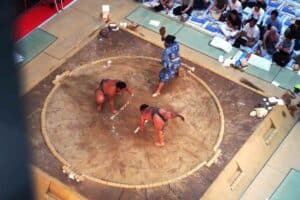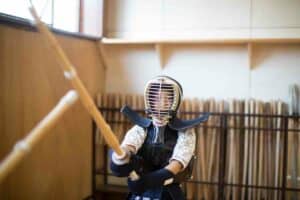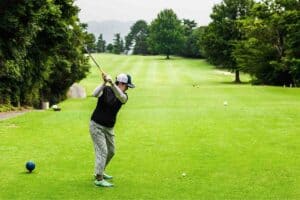Fencing and Kendo are respected around the world for their strategy, mental discipline and brilliant displays of swordsmanship.
However, though both martial arts use swords, their origins, practice, and philosophies differ significantly.
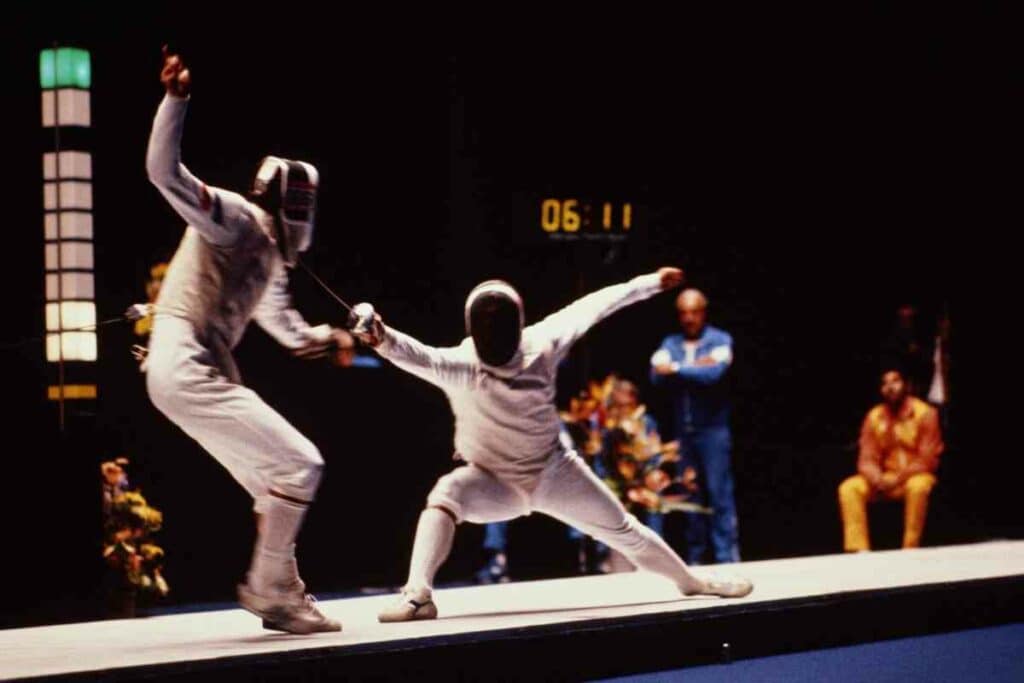
In particular, kendo is a discipline that has the objective of shaping the whole character, in line with the traditional Japanese martial code of honor.
So, if you know you’re épée from your saber and foil but not your “shitsurei shimasu” from your “shomen ni rei”, this quick comparative guide of Kendo vs fencing will get you up to speed on how these two classic combat sports compare!
Table of Contents
Kendo vs fencing- What’s the difference?
Kendo is described in some places as being a form of Japanese fencing, but this description is not accurate.
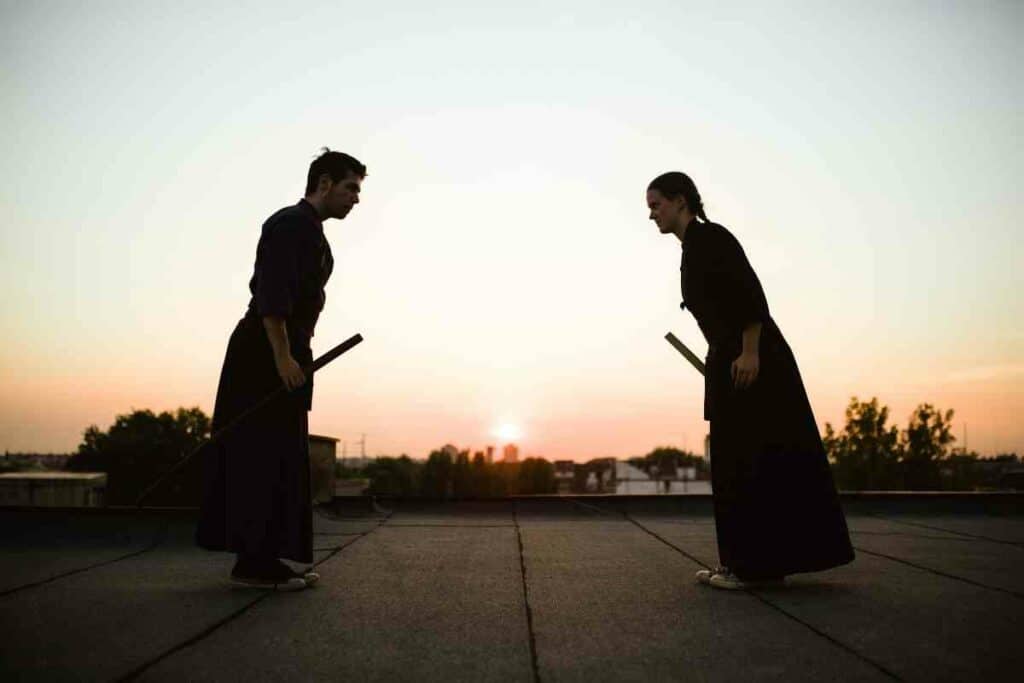
Though kendo places a heavy emphasis on aspects of swordsmanship the bigger priority is self-discipline and personal development.
To understand these two sports a little more here are brief descriptions of Kendo and fencing.
What is kendo?
Kendo is a Japanese martial art that developed from kenjutsu, the original training and practice in swordsmanship in Japan.
The main development in kendo was the replacement of real swords with bamboo swords, known as shinai.
It is also known as:
- 剣道
- Kendō
- sword way
- way of the sword
- sword path
As a martial art, kendo combines physical fighting strategies and techniques with a philosophy and values geared towards personal development, so that the character of the practitioner becomes disciplined.
Did You Know? It is one of the leading sports in Japan with more than a million followers, making it comparable to judo and sado in popularity and it is widely taught in schools, colleges, and clubs.
The most elite practitioners compete in national and international championships, including the World Kendo Championship and World Combat Games.
The origins of kendo
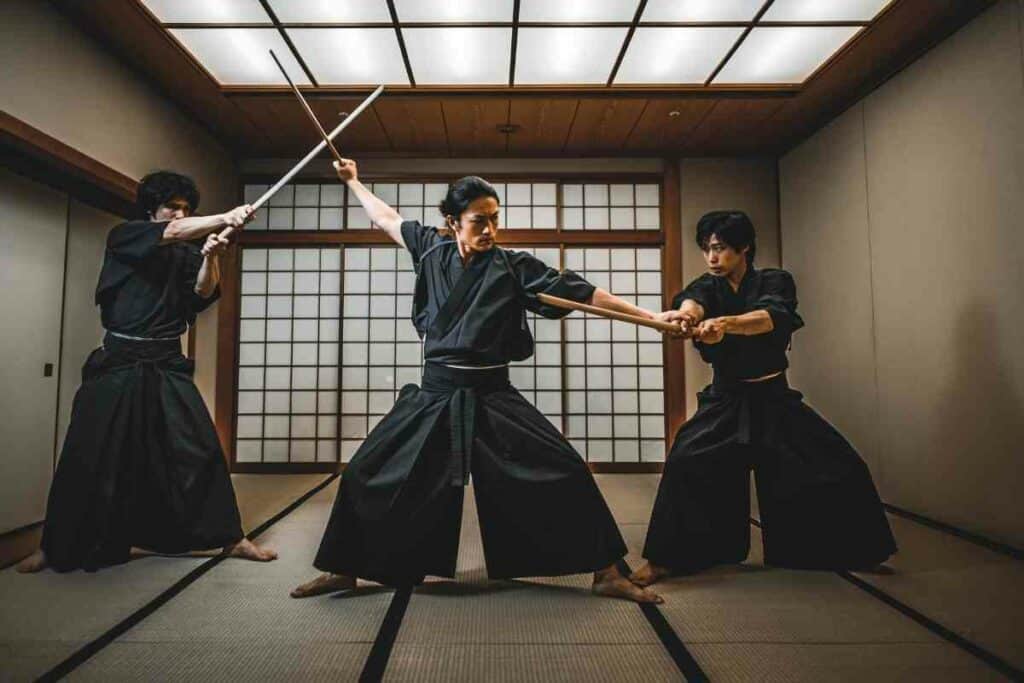
The history of kendo follows notable upheavals in Japanese history, in particular the voluntary surrender of swords by the Samurai in 1871.
Here are the key highlights of the history of kendo:
- Kenjutsu, schools of swordsmanship have existed in Japan since at least the 14th century. These schools trained the military class (Samurai) of feudal Japan using special exercises called kata. The techniques and disciplines taught underpin the modern practice of kendo.
- The bamboo practice swords that are characteristic of kendo were introduced by Naganuma Shirōzaemon Kunisato (長沼 四郎左衛門 国郷) in the 18th century. Naganuma also developed an early form of the distinctive armor that kendo practitioners use.
- Once the Samurai class was abolished in the 1870s, efforts were made to preserve and standardize the diverse sword stylish and develop kata for police training. This led to what is now known as modern kendo.
What is fencing?
Fencing is not actually one sport but three distinct disciplines that each use a different type of sword:
- Foil
- Epée
- Saber
In all three forms of fencing, competitors win points against their opponents by making contact with them using their weapons.
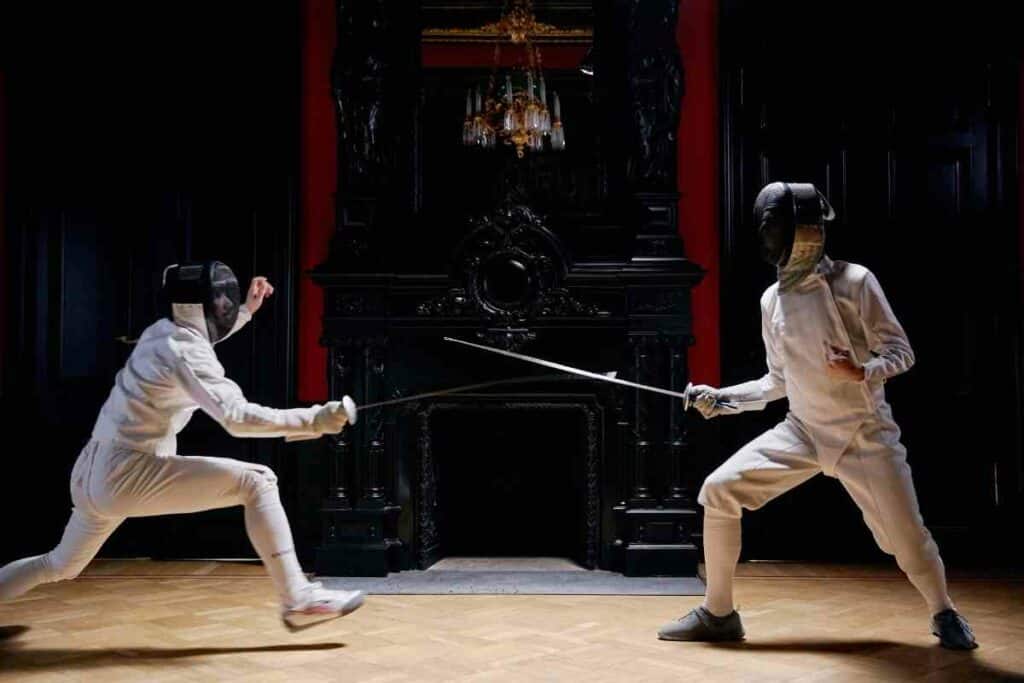
Fencers are trained in a variety of sword skills and offensive and defensive movements and techniques.
Fencing is based on traditional European or Old World swordsmanship skills which were formalized and regulated by various French, Italian and German schools.
Classical fencing differs from the contemporary form where most participants specialize in handling a single weapon rather than all three.
Fencing has been an Olympic sport for over a century. As an international sport, fencing is taught and practiced in clubs schools, and universities in almost every country.
The history of fencing
Fencing’s origins can be traced back to Europe and the swordsmanship used in war, duels, and self-defense.
Formal training and documentation of the practices and techniques used by swordsmen have been found to exist as early as 1300 AD in Germany.
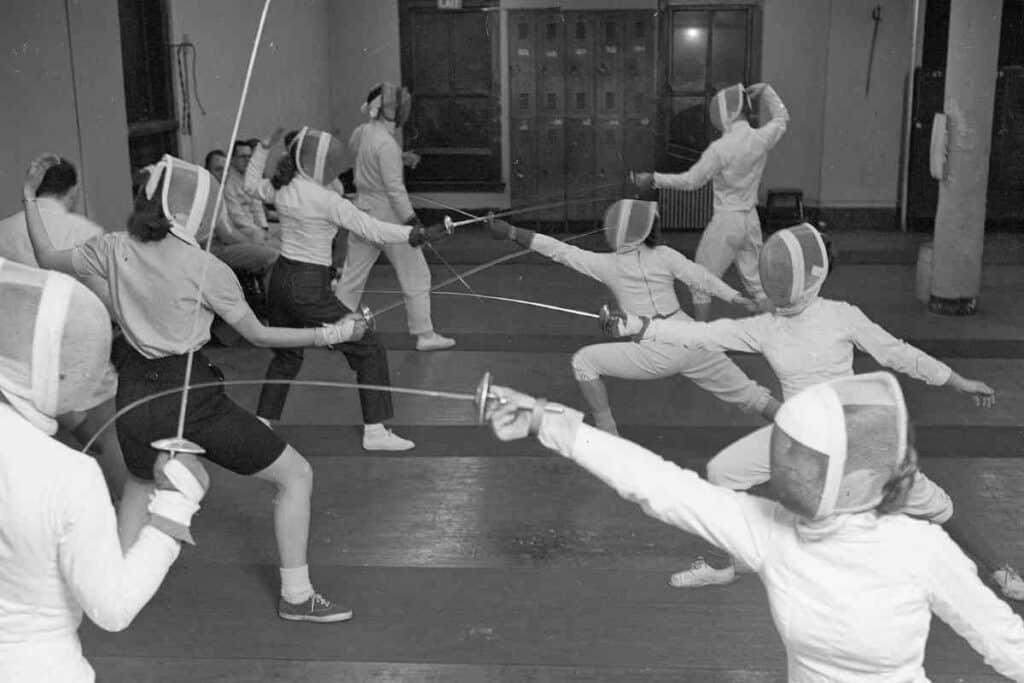
Later 15th-century treatises from Italy describe aspects of swordsmanship such as handling the arming sword, longsword, or poleaxe.
Italian fencing masters developed the origins of modern fencing at Bologna University in Italy and spread the practice of using a sidesword alone or in combination with a buckler, or other swords and daggers.
The Italian version of fencing, along with French enhancements eventually became predominant with a school of swordsmanship, Angelo’s School of Arms becoming established in Carlisle Soho, London in the mid-18th century.
In London – Fencing developed into an elite sport with members of the aristocracy keen to learn. Later national and international fencing tournaments became regularized, leading to the introduction of fencing to the Olympic Games in 1896.
Key differences between kendo vs fencing
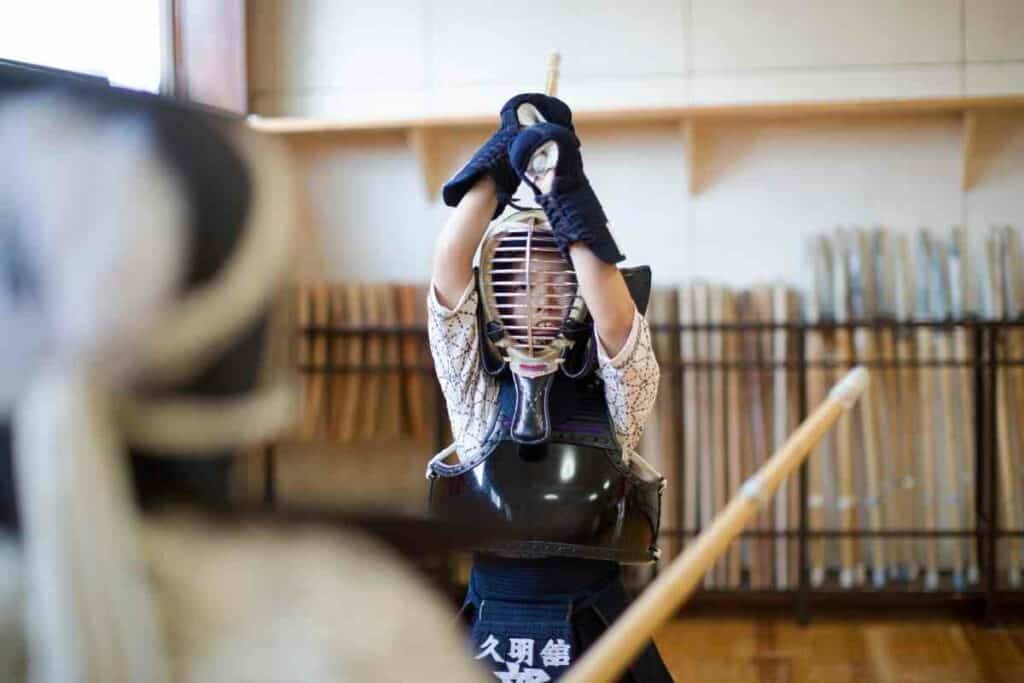
As you can see, kendo and fencing have different origins and practices, even though both sports were historically associated with swordsmanship training.
Let’s look at practical differences between key aspects of both sports.
Kendo vs fencing equipment
Swords Fencing
Fencing uses three types of sword:
- Épée: a thin thrusting weapon of moderate weight (heavier than a foil). Its maximum weight is 775g. The long blade terminates in a rounded handguard. A palpable fit on an opponent is made with the tip of the sword.
- Foil: lightweight (500g) thrusting weapon. Long, thing, flexible blade with a handguard. Hits with this sword are only valid if the tip is used.
- Saber: a cutting and thrusting weapon that is a maximum of 500g in weight. This sword has a more extensive handguard.
Swords Kendo
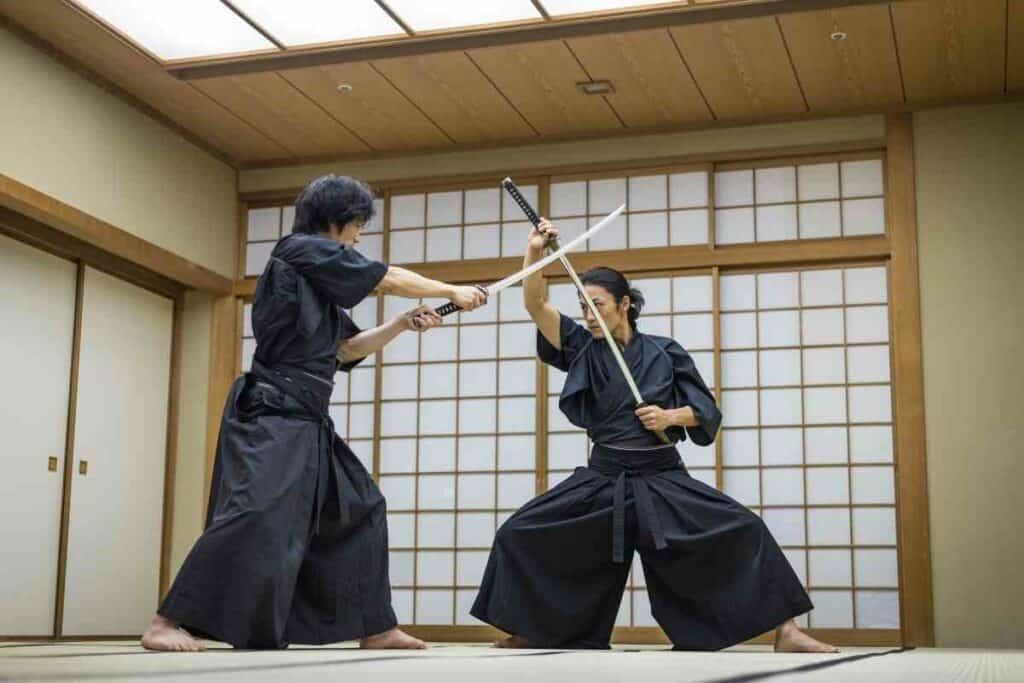
Kendo has two types of wooden sword:
- Shinai: This is a representation of a Japanese sword. It is comprised of 4 long bamboo slats that are held together with leather. Modern shinai may be maid from carbon fiber and resin.
- Bokutō (木刀,) are solid wooden swords that are also used for strikes along their tip or edge.
Clothing Fencing
Fencers wear tough cotton for nylon clothing with reinforced or protective undergarments.
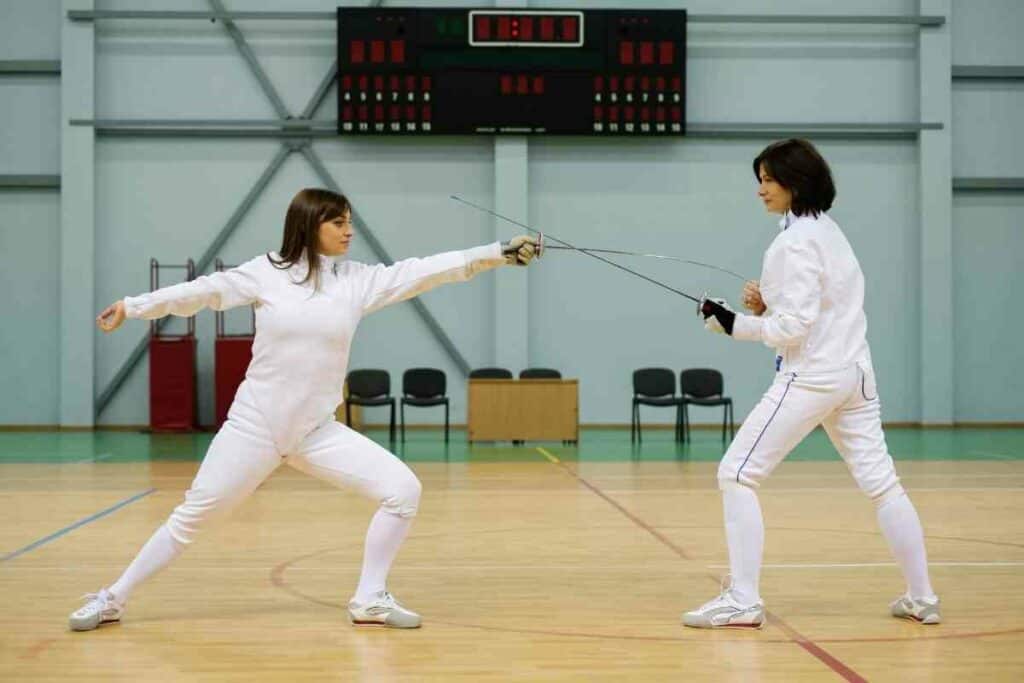
The key pieces of clothing are:
- Jacket: this form-fitting jacket that a strap that passes between the legs (crossard).
- Plastron: this molded plastic item protects the underarms from hits.
- Mask: This face protection includes a bib that surrounds and protects the neck and a metal mesh that covers the face.
- Chest protector: a plastic layer that protects the breasts of females or adds additional protection to males.
- Gloves: these include a gauntlet that protects a blade from going up an opponent’s sleeve.
- Breeches: These heavy cotton garments protect the legs and overlap the jacket while allowing movement at the knee and hip.
- Socks: Fencers wear long thigh-high socks. Shoes: Fencing shoes are flat with reinforcement to prevent lunging.
Clothing Kendo
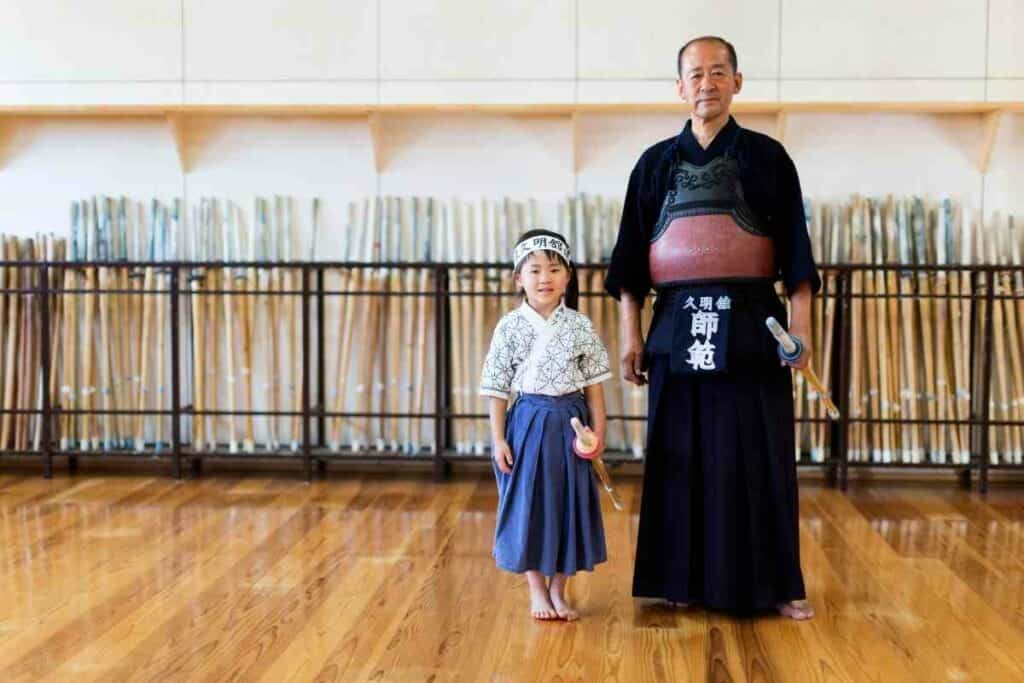
Kendo fighters wear traditional Japanese clothing with armor components that include:
- Helmet or men (面): this special helmet has a face grille and leather shoulder and back flaps to protect the upper body.
- Gloves known as kote (小手): are long thickly padded globes that protect the hands and forearms.
- Breastplate: called a (胴, dō): this breastplate is still manufactured using a traditional method. It is worn with three heavy leather flaps call tare (垂れ) that protect the hips and groin area.
Kendo vs fencing rules
| Fencing | Kendo | |
|---|---|---|
| Participants are called | Fencers | Kendoka |
| Level of contact | Semi-contact | Semi-contact |
| Number of matches/rounds played in a tournament: | 9 bouts | 5 tai kai (matches) consisting of multiple encho (rounds) |
| Duration of a match | 3 minutes | 5 minutes |
| How are points awarded? | Landing strikes on an opponent in the target range and with the part of the sword specifically specified for épée, saber, or foil. | Accurate thrusts (each with specific terminology) Proper posture High and positive spirits |
| Prohibitions | Attacking opponent limbs Striking an opponent with an unauthorized part of the sword. Turning your back on an opponent. | Use of unauthorized kendo equipment. Tripping or shoving an opponent. Dropping the weapon Insulting opponents |
Kendo vs fencing practice
Match Location Fencing
- A rectangular ring dived into two equal sides.Ring dimension 45 feet (14 meters) by 6.5 feet (2 meters).
- The ring is divided up by various lines that separate the guard line from the end of the ring.
Match Location Kendo
- A purpose-built dōjō with a sprung floor.
- Square competitive area dimensions: 30 to 36 feet (9 to 11 meters) square.
Example offensive maneuvres Fencing
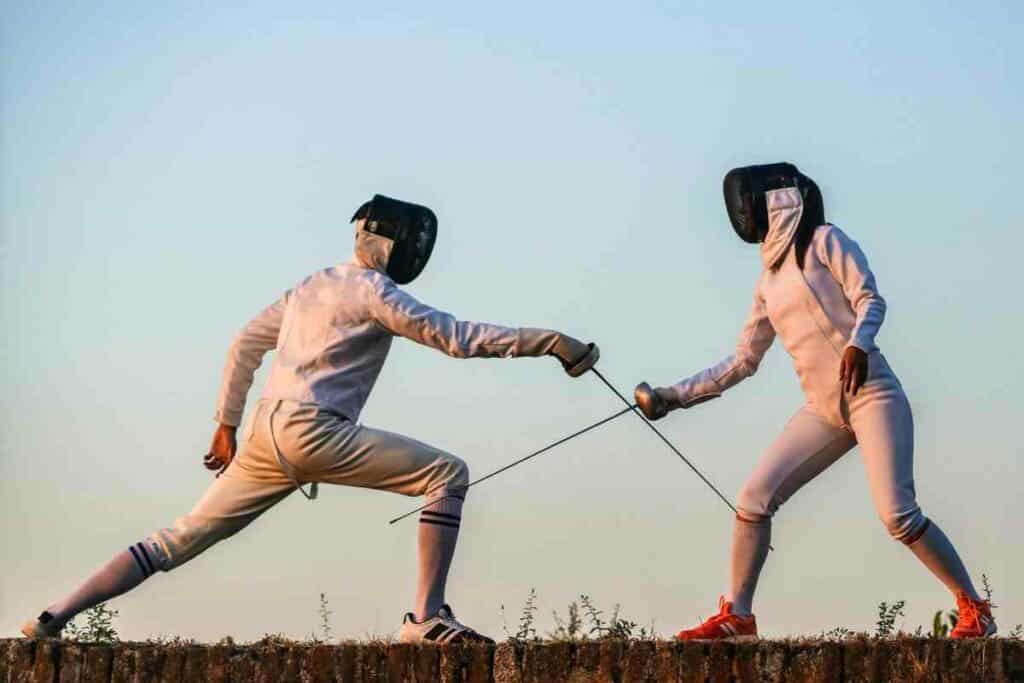
- The lunge: this is a thrust where the body is propelled forward by the back leg while the front leg is extended.
- An attack: involves extending the sword arm and continuously threatening the opponent’s target area. There are several specific types of attack.
- A Flick: uses a flexible foil or épée sword to bend the blade and whip it over to strike an opponent in their target area.
Example offensive maneuvres Kendo
In kendo, offensive maneuvres are called Shikake waza.
Examples include:
- Men-uchi: hitting or cutting an opponent on the head.
- Kote-uchi: striking or cutting an opponent on the wrist.
- Do-uchi: blow to the side of the abdomen.
Example defensive maneuvres Fencing
- A parry: this involves using one’s sword to defend or deflect an opponent’s attack away from the target area.
- Counterattack: involves launching an attack while moving one’s body out of the way of an opponent attack. Counter attacks can be an effective way to score points against the opponent’s arm in épée.
Example defensive maneuvres Kendo
In kendo, defensive maneuvres are called Ouji waza.
The defensive maneuvres in kendo are:
- Nuki Waza
- Suriage Waza
- Kaeshi Waza
- Uchiotoshi Waza
- Amashi Waza
Kendo vs fencing philosophy
The concept and purpose of kendo vs fencing is where these two great sports diverge most.
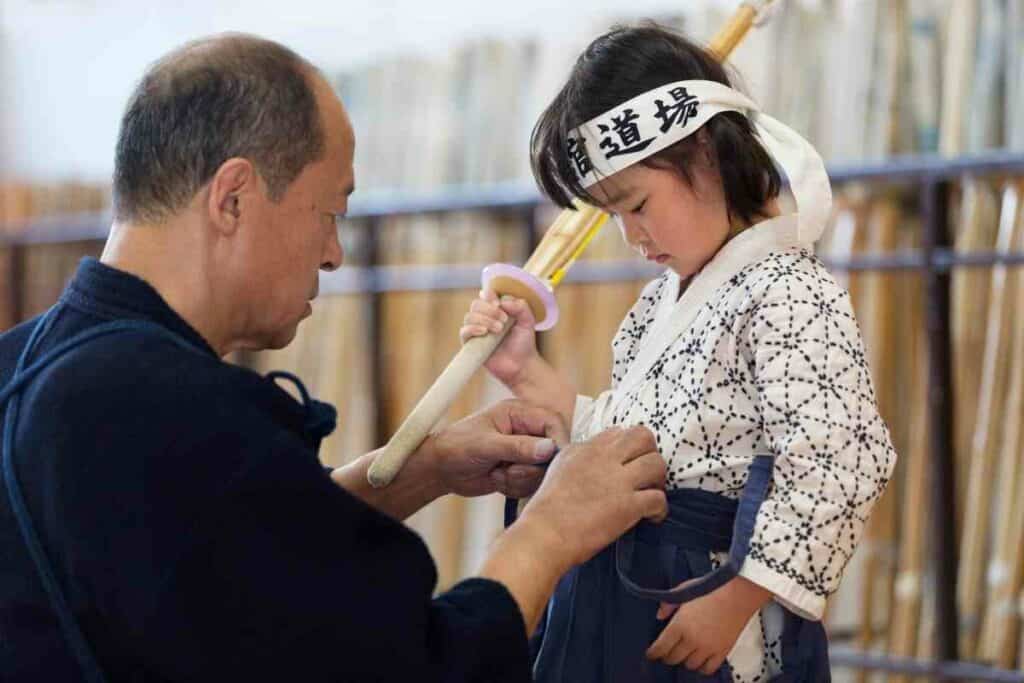
Contemporary fencing is a sport through and through and does not run any deeper than the discipline and expertise of playing a match.
Kendo, however, is primarily used for character formation and discipline in line with the principles of the sword katana.
This is a completely different philosophy that goes right back to the days and ways of the Samurai.
Check out how the All Japan Kendo Federation describes the purpose of kendo here.
Rounding up
Kendo and fencing are elegant and masterful sports, but still hold to their distinctly Japanese, and European traditions.
Both sports take a lifetime to master, but as a martial art, the code of honor and holistic personal development is still closely held by kendo.

